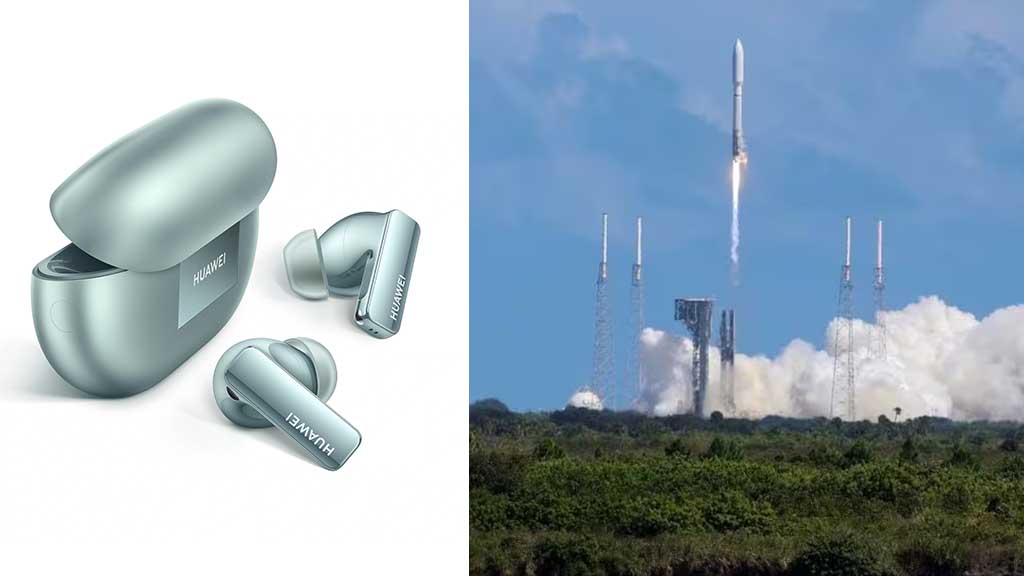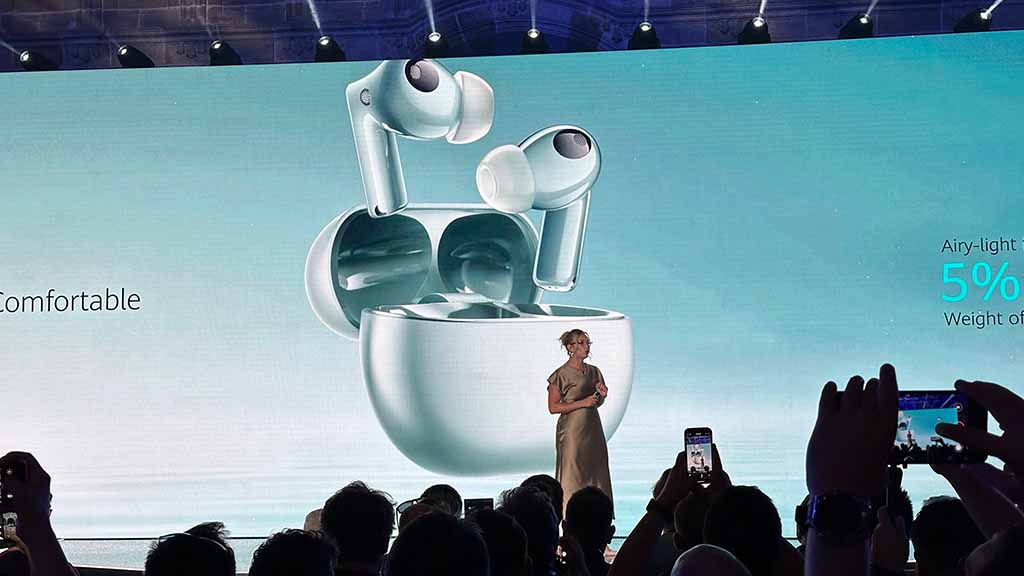Huawei
A reporter tests new Huawei FreeBuds Pro 3 on rocket launch site for noise cancellation accuracy

Huawei recently launched FreeBuds Pro 3 TWS earbuds, these are specially designed to provide uninterrupted audio quality and a reporter tuned into a rocket launch site to test their noise cancellation ability.
A Chinese news reporter conducted a hardcore test noise cancellation test of Huawei FreeBuds Pro 3 to watch an on-site rocket launch. The reporter said that the transmission of voice remained clear even during the liftoff. However, we don’t know how the person measured such statics or explained the equality of the sound in the ear. Whether it’s based on the regular sound experience.
According to the information, the roaring of the rocket engine is so loud that the nearest place to watch the take-off is 5 km from the launch pad (the area where rockets take off). In other words, it is a distance of nearly 40 soccer fields. Therefore, the launch site and audience still hear the loud noise of the launch vehicle from far distances.
In such conditions, it’s hard to hear the sound of smartphones due to background voice interception. However, a noise-cancellation headphones could save the day.
If this test is true, all of the credit goes to the tech Huawei is using FreeBuds Pro 3. Let’s explore them in short summaries.

Kirin A2:
This is a brand new wearable chip that Huawei FreeBuds Pro 3 utilized to provide audio quality. It boasts 1.5Mbps lossless sound transmission, making it the industry’s first CD-level lossless audio transmission TWS earbuds.
Silent call 2.0
The new Silent Call 2.0 enables a “revolutionary” improvement as compared to the previous generation. Call noise reduction requires systematic human voice recognition and processing technology. It means that it not only needs to recognize noise but also process human voices at the same time, which also tests computing power and comprehensive capabilities.
Huawei FreeBuds Pro 3 has improved call noise immunity by 5dB in noisy environments such as high-speed trains, subways, airports, shopping malls, and amusement parks.
Hardware change:
Huawei FreeBuds Pro 3 uses a high-sensitivity bone conduction pickup microphone, which vibrates the skull when speaking to accurately collect the user’s voice.
The human voice pickup capability is 2.5 times higher than that of the previous generation, and the sound pickup is more accurate. At the same time, the new VPU sensor is positioned closer to the ear than the previous generation, which can effectively isolate noise and allow the other party to hear less noise around them during calls.
In addition, in terms of software, the headphones have also been upgraded to support multi-channel neural network algorithms (DNN) with larger data volumes and more complex calculations.
The multi-channel DNN call noise reduction algorithm separates the vocal frequency band and the full-band audio signal and then dynamically fuses them.
The noise reduction processing is naturally more accurate and retains more vocal details. The vocals in the call are not only clear but also real and natural. It truly feels like a face-to-face conversation.
Dynamic Noise Cancellation 3.0:
With this new noise cancellation capability, FreeBuds Pro 3 makes noise reduction more “smart”. It supports real-time adaptive noise cancellation. It is no longer limited to the smart switching of three modes but combines mode noise reduction + real-time noise reduction.
The DNC 3.0 uses full-time and full-frequency accurate calculation and is customized for different noise environments and user-wearing conditions.
In terms of the depth of active noise reduction, Huawei FreeBuds Pro 3 has an average noise reduction increase of 50% in the noise frequency band of 50Hz-3kHz in the main living environments (such as offices, buses, flights, and others). This allows users to use it in the office, buses, flights, etc. You can always enjoy good music quietly in the scene.
(source)






